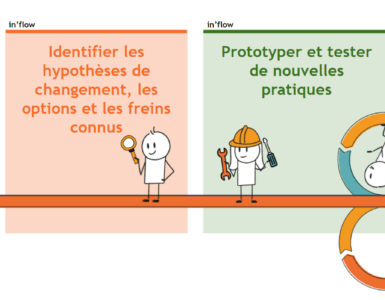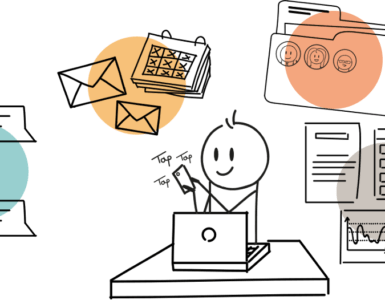Pretty exciting news in this mysterious digital world! We’ve been releasing our 7th study and analysis on the most commonly used solutions of the market. This clearly marked the beginning of a thrilling new year, full of great events. We’re also part of the Enterprise 2.0 Summit this week in Paris – this big yearly gathering putting forward France’s most prominent “digital leaders”. It has become so trendy to talk about “digital leadership”! What’s exactly behind this brand new association of words? And what does it really take to be a digital “leader” (vision, expectations etc)?
Well first of all, thinking “leadership” is thinking “management” and we all know management had and still has to adapt to new ways of working and thinking the workplace. If we focus on the managers/employees glamorous relationship here, we’re witnessing a remarkable turnaround.
Let me explain. Back to the theories of Scientific Management the picture we had and the picture that persists is the one of managers maintaining a permanent – almost harassing – control over employees’ work practices, schedules, results, budgets.
Reinventing the ecosystem and banishing outdated management
Fortunately for employees, these forms of micromanagement are progressively vanishing, at the expense of a “fair” and more “balanced” ecosystem (by ecosystem we are including here contractors, partners, customers) in which managers and employees are interconnected, interdependent and part of a huge dynamic and innovative move.
Knowledge is power: knowledge is also everywhere
Naively, it was perceived that knowledge was owned by top-managers only. Well, this brand new ecosystem we introduced is actually a precious cross-hierarchical knowledge “highlighter”. I mean by that, people are no longer operating alone. Individuals, teams or departments’ intelligence and judgments have a perceptive impact.
Now we have described this digital workplace, let’s focus on the people entitled to build it. Let’s not (please) enter the debate of digital leaders’ backgrounds. So many business or functions are legitimate enough to have an interest in digital transformation (among them IT, marketing or communications).
Like our RSET7 highlighted it, today, more than 40% of CAC 40 groups have a Chief Digital Officer, supporting organizations building a digital identity. Appointing a CDO or not is mainly up to companies to decide, depending on their long-standing commitment to technology-enabled business improvements. The question however is not really here.
Truth is, digital leadership does not come from a specific executive. It’s the business of all employees to cultivate a digital state of mind and become a real evangelist.
So what does it really take to be good digital leader in this bright & shiny world?
It goes without saying that digital leaders should have a wide and rigorous knowledge of the opportunities and barriers and how they can best transcribe them into a strategy fitting organizations’ culture.
Besides having a very general outlook of the workplace, digital leaders are effective communicators, quick decision-makers based on confidence and solid data-analysis, but also extremely flexible and let’s not forget, collaborative!
They also put forward integrity as the top 3 human value while fostering a culture of knowledge. Well, actually, these are the basic qualities a leader must have, nothing new here. So, what’s different for someone leading digital projects?
What differentiates them is the well-known notion of “agility”. The Oxford dictionary defines “agile” as someone able to move quickly and easily. Digital trends move so rapidly, even more rapidly than any other traditional markets. They are also very unpredictable. To survive and succeed in this race, digital leaders have to be agile and clever, and let’s be honest and declare that this quality is not given to anyone.
From a pure management point of view, as power is shifting and knowledge is wide spreading, digital leaders by definition must drive individual engagement by considering and assisting employees’ concerns and most importantly empowering them onto the digital road. This will give birth to an agile workforce.
Cross-functional and cross-organizational Leadership
As digital impacts the entire organization it’s very clear that effective leadership is required at every single level in order to drive the strategy in the best direction.
Looking organizations as an ecosystem means considering them carefully structured with employees, teams, departments, interacting constantly. But, assuming that, isn’t it assuming that we don’t need managers anymore? That would be a very short-minded way of perceiving innovation.
Let’s not misinterpret the whole “employees first” song. It has become so fashionable to picture tomorrow’s organizations operating effectively without hierarchy and serving its own needs through a mystical shared team purpose. That fantasy clearly does not make human psychology accountable and we all know it would end very badly.




